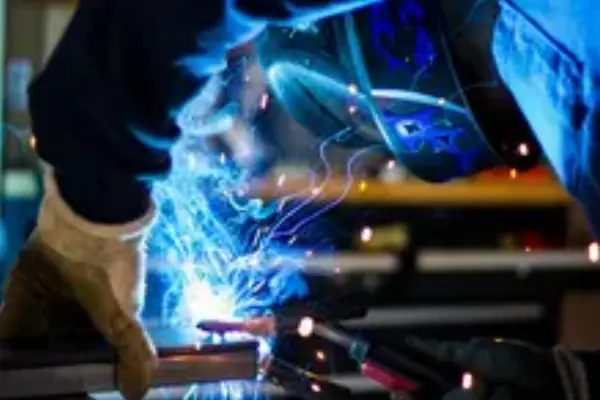
As the automotive industry advances, an increasing number of automotive components are being made from aluminum alloys to achieve lightweight designs and complex structural forms. Aluminum alloys offer low density, strength comparable to grey cast iron, and excellent toughness, along with good casting properties, making it possible to produce complex thin-walled automotive parts. The expanded use of aluminum alloys can significantly reduce the weight of vehicles, which is a pressing need in the automotive industry. Through the strengthening of alloying elements, the strength of aluminum alloys has been greatly improved.
Due to the lightweight nature and excellent heat dissipation properties of aluminum alloys, they are particularly suitable for use in components such as transmission housings, motor casings, and other parts that need to perform under harsh conditions. The aluminum motor casing die-casting technology ensures material quality through processes such as purification, refining, grain refinement, and modification. Precision die-casting helps ensure the consistency and stability of aluminum castings.
In recent years, with the rapid development of computer technology, die-casting simulation technology has become widely used. This technology plays a crucial role in improving the internal quality of castings, shortening the development cycle, and reducing costs. It helps in controlling the quality of castings and is essential during the development process of aluminum cast components.
In modern vehicles, the motor controller is a key component responsible for managing the power flow to the motor, enabling efficient operation. However, one often overlooked factor in ensuring the longevity and performance of these motor controllers is the sealing of their housing. Properly sealed motor controller housings protect the sensitive electronics from external factors like dust, moisture, and temperature fluctuations. This article explores the critical role of sealing in automotive motor controller housings, the associated risks of neglect, and the long-term benefits of investing in the right sealing techniques.
Understanding Automotive Motor Controller Housings
What is an Automotive Motor Controller Housing?
An automotive motor controller housing is an enclosure that surrounds the motor controller, which is the component responsible for regulating the power delivered to an electric or hybrid vehicle’s motor. This housing is vital in protecting the controller’s internal electronics from environmental factors like dust, water, and mechanical impacts. The motor controller plays a crucial role in managing power distribution, contributing to the vehicle's overall efficiency and performance.
Role of Motor Controller in Vehicle Performance
The motor controller is the "brain" of an electric motor system, controlling the amount of power and torque supplied to the motor. In automotive applications, this is particularly important for managing energy efficiency, especially in electric vehicles (EVs) and hybrid electric vehicles (HEVs). A malfunction in the motor controller due to exposure to contaminants can result in performance drops, increased energy consumption, or even vehicle failure. Hence, protecting this component through proper housing and sealing is crucial.
Different Types of Motor Controllers Used in Automotives
There are two primary types of motor controllers used in vehicles: AC (Alternating Current) and DC (Direct Current) motor controllers. Both types require robust housing to protect their internal systems, but each has slightly different sealing requirements based on the environment they operate in. AC motor controllers, often found in larger industrial vehicles, may require heavier-duty sealing compared to the more common DC controllers in electric cars.
The Risks of Not Sealing Automotive Motor Controller Housings
Exposure to Dust and Contaminants
Dust and small particles can easily infiltrate a poorly sealed motor controller housing, leading to performance issues over time. Dust accumulation on sensitive electronic components can cause overheating, reduced efficiency, and in some cases, complete failure. Sealing the housing effectively eliminates this risk, ensuring that the internal components remain free from harmful contaminants.
Water and Moisture Damage
Water ingress is one of the most dangerous threats to motor controllers. In wet environments or during heavy rain, water can seep into the housing, causing corrosion, short-circuiting, and eventual failure of the motor controller. By using water-resistant seals and ensuring their integrity, vehicle owners can prevent costly repairs and extend the life of their motor controllers.
Heat and Temperature Fluctuations
Temperature fluctuations can also pose a significant risk. In vehicles, especially those operating in harsh environments, the motor controller is exposed to both high temperatures from the motor itself and cold external temperatures. This can cause condensation to form inside the housing, leading to moisture-related issues. A well-sealed housing mitigates this risk by providing thermal insulation and preventing condensation build-up.
Sealing Materials and Techniques for Automotive Applications
Types of Sealing Materials for Motor Controllers
Seals for motor controller housings come in various materials, each suited for specific environmental conditions. Common sealing materials include rubber, silicone, and polyurethane, which offer excellent protection against moisture, dust, and temperature extremes. Rubber is highly flexible, making it ideal for applications where movement or vibrations are common. Silicone seals, on the other hand, offer excellent heat resistance, making them suitable for high-temperature environments.
Best Practices for Installing Seals in Automotive Controllers
Proper installation of seals is critical to their effectiveness. During installation, care must be taken to ensure that the seal fits tightly around the housing without any gaps. Poor installation can lead to leaks, reducing the effectiveness of the seal. Automotive manufacturers and repair shops should always follow best practices, such as thoroughly cleaning the housing surface before applying the seal and testing the seal’s integrity after installation.
Ensuring Proper Seal Maintenance
Over time, seals can degrade due to exposure to heat, UV rays, and mechanical wear. Regular inspection and maintenance are essential to ensure that the seals remain effective. Vehicle owners should check the seals during routine maintenance checks and replace them as necessary.

 NO.38 Duanzhou 3rd Road, Zhaoqing(526060), Guangdong, China
NO.38 Duanzhou 3rd Road, Zhaoqing(526060), Guangdong, China




